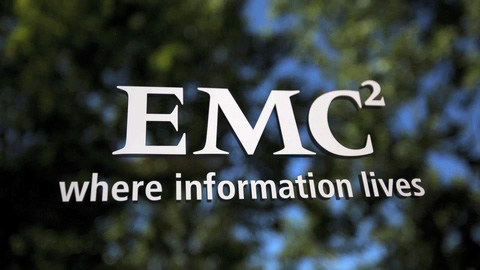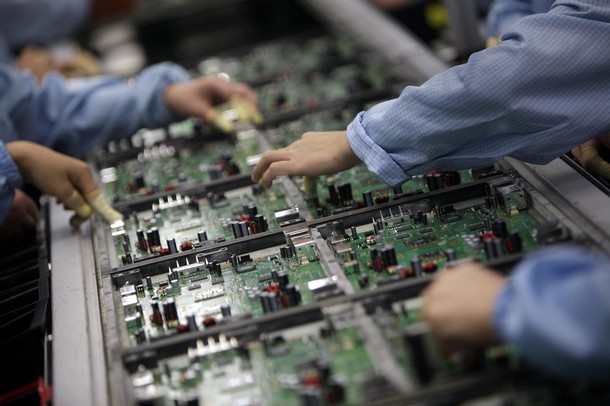The VCE partnership involving EMC, its subsidiary VMware and Cisco will not change, even after Cisco last month expanded its partnership with EMC rival NetApp to sell preconfigured cloud architectures.
“I feel the partnership is strong. Obviously, it’s a hyper competitive environment, so there’s a lot of speculation in the marketplace,” said VCE CEO Praveen Akkiraju in an interview this week with Computerworld.
Founded in 2009, VCE (Virtual Computing Environment), is a joint venture among EMC, its VMware subsidiary and Cisco Systems. VCE sells preconfigured and pretested cloud computing systems called Vblocks. VBlocks are made up by Cisco’s Unified Computing System (UCS) servers and networking switches, EMC’s storage arrays and VMware virtualization software.
Alex Shubov, a Vblock engineer, explains how the integrated architecture works in VCE’s Solution’s Lab in Marlborough, Mass. (Photo: Lucas Mearian/Computerworld)
Akkiraju said there are no plans to go outside of the partnership to third-party vendors for servers or switches or to offer an a-la-carte style VCE because Akkiraju considers Cisco “best of breed.”
“More fundamentally, Cisco is one of our key investors, and we don’t envision a different strategy than what we have today,” Akkiraju said.
“Because of the nature of VCE as a joint venture, we are tightly aligned in our go-to-market from a sales perspective, from a services perspective and the way we co-develop our road maps,” Akkiraju continued. “If anything, because of my deep experience with Cisco, we’re able to have very honest and open conversations.”
Prior to accepting the position of chief executive at VCE six months ago, Akkiraju worked at Cisco for 18 years. His last position was as senior vice president and general manager of Cisco’s Services Routing Technology Group, where he oversaw cloud infrastructure and integrated networking products.
Even so, there was some speculation recently that the VCE partnership might splinter after Cisco and NetApp expanded their reseller partnership around NetApp’s preconfigured FlexPod architecture. FlexPod combines Cisco switches and servers with NetApp’s FAS storage systems.
However, it wouldn’t be the first time a strong partnership failed when cooperation turned into competition. Such was the case with EMC’s reseller partnership with Dell, which lasted a decade, but ultimately broke apart after Dell’s storage line began competing more and more with EMC’s.
Like the VCE partnership, the EMC-Dell arrangement was extremely tight and profitable for both companies. Dell sold more than $1 billion worth of midrange and entry-level storage products from EMC.
Last week, EMC reported that VCE exceeded company expectations as demand for Vblock systems showed strong year-over-year growth.
VCE upgrade plans
The Vblock platform is also expected to receive significant upgrades later this month, according to Akkiraju. On Feb. 20, VCE will announce both software and hardware upgrades that will help it transition to the “next-generation” data center, he said.
Akkiraju described the next-generation data centers as a type of private cloud that has less siloed architecture with shared pools of infrastructure that are “dynamic and intelligent.”
Without offering specifics, Akkiraju said customers have been vocal about needed upgrades, which spurred the changes that will offer more SaaS-like capabilities while also supporting virtual desktop infrastructures (VDI) and bring-your-own-device (BYOD) corporate strategies.
The front of a Vblock rack. Cisco blade servers are on the bottom, switches above that and EMC storage arrays over that. (Photo: Lucas Mearian/Computerworld)
Akkiraju pointed to the example of Salesforce.com, an application many companies deploy, but that the data for which comes from many places: — on premise and through a private cloud, or even off premise through a public cloud.
“So how do you stitch together data that comes from different parts of the infrastructure, some owned by the company and some stored externally for a mobile salesperson with an iPhone or an iPad?” he said. “That’s a great example of a next-generation data center workload that requires a different type of architecture and thinking.”
“The next phase of what we’re about to embark on … will establish the convergent infrastructure as a foundation and start to build an ecosystem around truly freeing up the CIO to be able to deliver the IT as a service,” Akkiraju said. “In the cloud era, you accept a certain level of standardization to get the benefits of flexibility and speed.”








